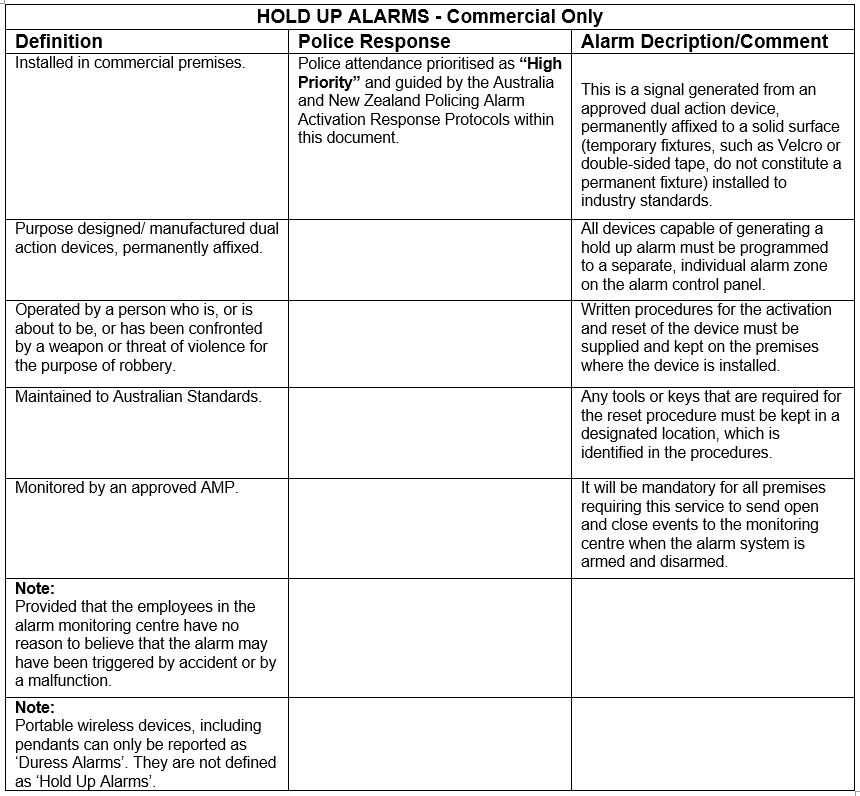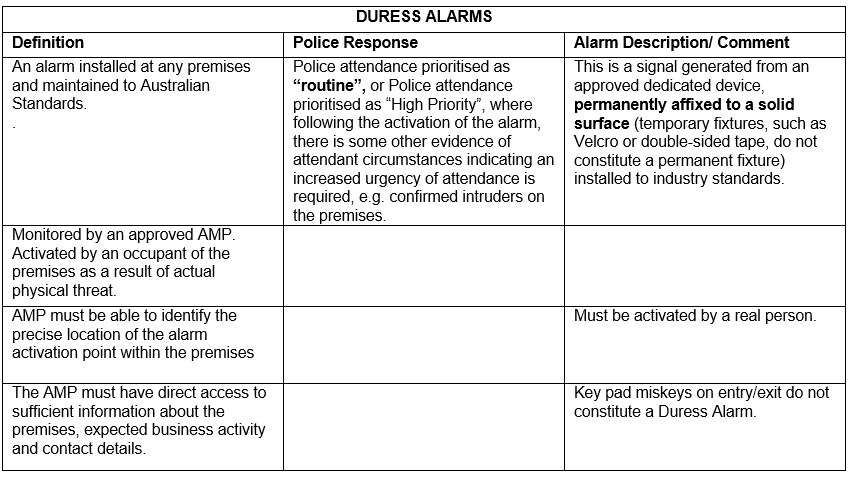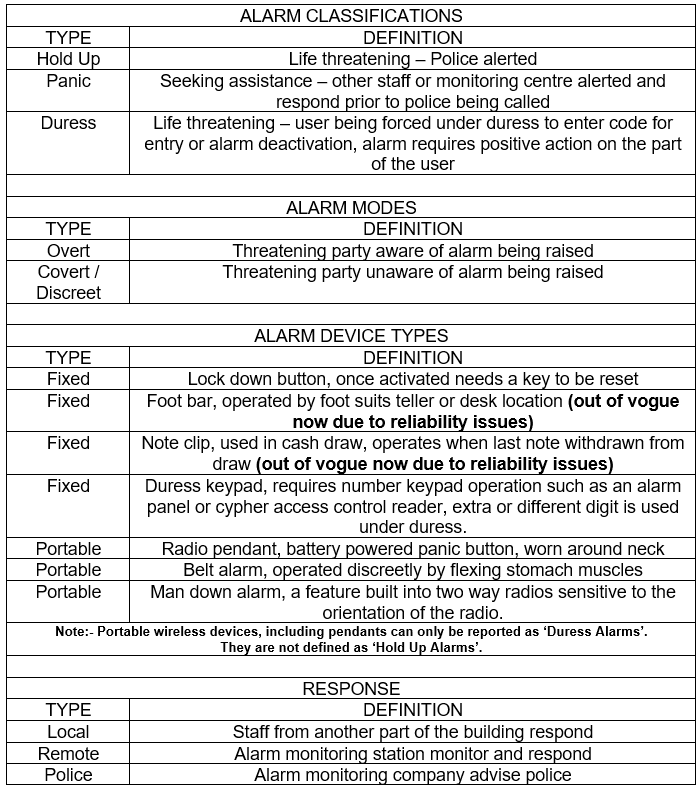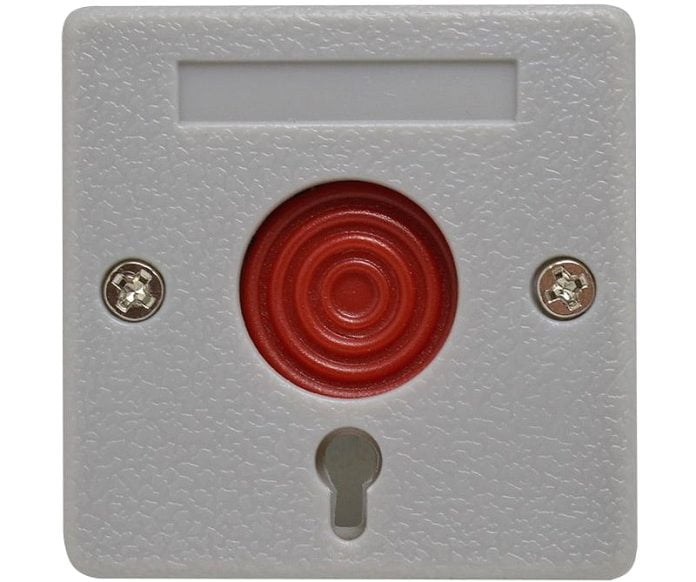SEN has been doing some delving into past topics that might warrant revisiting. Some years ago, security consultant, Roger Pearce, had been asked by a large utility to review the effectiveness of duress alarms that had been installed at a number of customer service and inquiry counters they had scattered around their buildings.
My client was concerned about whether these alarms were installed correctly and what were the correct procedures they should have in place for their proper use. Outside of the banks not many of us (fortunately) have to deal with this type of alarm very often. Regrettably though, threats to people working in public areas is becoming more common.
Initially I thought this would be a straight-forward assignment, just look up the standard in AS2201 and take it from there, wrong, there is no standard. OK no problem, I will check with ASIAL, similar story. Naz Circosta, Chairman of the Standards Australia Alarms Committee EL-031-05 advised me at the time the committee was working on it, but it would be at least 12 months before anything came out.
So, I did my own research. In order to put some ideas forward for discussion and in order to put something up for consideration by the Standards Australia Alarm committee I put forward some suggestions. What was the result? Well, as it happens duress alarms did not make the cut and there is still no specific reference to duress alarms in the standard. However, thanks to Suzette Po-Williams at Central Monitoring Services for bringing me up to date with the National Police Alarm Activation Response Guidelines, which reference duress alarms and how they should be monitored.
The National Police Alarm Activation Response Guidelines document gives guidelines for how a duress alarm should be installed as follows:
* This is a signal generated from an approved dual action device, permanently affixed to a solid surface (temporary fixtures, such as Velcro or double-sided tape, do not constitute a permanent fixture) installed to industry standards
* All devices capable of generating a hold up alarm must be programmed to a separate, individual alarm zone on the alarm control panel
* Written procedures for the activation and reset of the device must be supplied and kept on the premises where the device is installed
* Any tools or keys that are required for the reset procedure must be kept in a designated location, which is identified in the procedures
* It will be mandatory for all premises requiring this service to send open and close events to the monitoring centre when the alarm system is armed and disarmed.
Note:
* Portable wireless devices, including pendants can only be reported as duress alarms. They are not defined as hold up alarms
* Hold up alarms are a Category A alarm and have slightly different criteria to duress alarms, which are category B as per the following 2 tables:


Installers and integrators should note the reference to AMP – police will respond to requests for assistance from accredited AMPs. For the purpose of these guidelines, an accredited AMP is defined as:
(i) It is a current member of an recognised security industry organisation, and
(ii) It complies with Australian Standard 2201.2 (as revised from time to time) monitoring centre certification, and
(iii) The telephone link in its alarm monitoring centre is capable of showing Caller Line Identification (CLI) to the relevant police jurisdiction’s telephone links.
There are 2 other Category A alarms namely High Risk Premises Alarm & Monitored Personal Safety Alarm (MPSA) and 4 other Category B alarms being Multi-Sector / Multi-Break Alarm, Communication Failure, Single Sector Alarms at High Risk Premises, Vehicle Tracking Alarms, as well as Category C Any alarm other than those listed above e.g. portable wireless devices, including pendants leaving Category D
• Multiple Sector Alarms, where there is no ready access to the premises.
• Single Sector Alarms – Non High Risk Premises
• Flashing Blue Lights
• Unmonitored Alarms
• Vehicle Alarms
• Fire or Smoke Sensor alarms
• Medical Alarms
• Power Failure/Low Battery
There is not room in this article to cover all of these individually as this article about Duress and Forced alarms only.

Device Standards
Although not specifically mentioned in AS 2201.3 the duress alarm devices, where applicable, should comply with the General Requirements in Section 2. They would usually be connected to a panel, which would be covered by the usual standard AS2201.1.
Although not intended for it, the radio pendants would probably come under the Class I classification in AS 2201.4 for wire free systems as a portable deliberately operated device. However for something as critical as duress alarm the integrity of the alarm probably requires a higher Class. Class V being the ideal. I would be interested to hear from any manufacturers who make a pendant that complies with Class V.
Monitoring Standards
Where the alarm is monitored by a central station AS2201.2 will apply.
When Do You Need Duress Alarms (Risk Identification)?
* Assault
* Disorderly conduct/fighting
* Jump counter to make threat
* Panic- staff needing assistance, Physical Threats
* Duress- staff being forced to enter code
* Holdup – weapon involved.
Standards
Since the current standard does not make reference to duress alarms I have used my experience and the experience of some security colleagues to come up with a ‘common practice’ standard.
The key points of this are:
(1) The perpetrator must not be aware that an alarm has been raised
(2) Any alarm raised must not be audible to the perpetrator
(3) Any alarm raised must not be visible to the perpetrator
(4) If being monitored locally the audible and visible alarm at “back of house” must comply with (1) & (2)
(5) Staff responding to alarm should not enter the area under threat until they are sure they understand the risk
(6) So that staff in the “back of house” office who are going to be asked to respond can establish the risk before entering the area under threat they should be able to covertly view the area. This would be by way of one way glass, door viewer (peephole) or CCTV coverage
(7) All staff likely to be involved should be trained in the way to respond to the threat.
Typical Situations: Cashier
The stations should have duress buttons and foot pedals as a minimum and depending on risk may also have rising screens. Rising screens are not suited to many situations as customers and other staff may still be at risk after the screens have been operated.
Staff should be able to retreat to a safe area behind the counter through a door, which is fitted with an access control reader.
Reception Desk
Reception desks by their very nature often need to be in a public area. Station(s) at the Reception Desk should be fitted with a duress button.
Staff should be able to retreat to a safe area behind the counter through a door, which is fitted with an access control reader.
Enquiry Counter
Station(s) at the counter should be fitted with a duress button.
Where possible a roller shutter screen above the counter, which can be pulled down in hurry and latches automatically, should be installed.
Meeting Rooms
A meeting room should have a duress button installed under the table. If the table is likely to be moved often radio duress might be more suitable.
General
The buttons will need to be installed so that they are easy to reach but cannot be activated accidentally. Watch out for the arms of swinging chairs etc.
The doors between the public area and the staff only areas should have an access control system installed and need to be kept locked.
I have talked here about duress buttons only, but of course these days it would be obvious to back these up with CCTV. For this reason I recommend the addition of a CCTV system.
The cameras can be linked to a Network Video Recorder (NVR) so that incidents are recorded for evidence. Apart from providing evidence, CCTV is a good deterrent.
Where the duress alarms are being monitored locally the NVR can be connected to the in house network so that when an alarm is raised the view from the appropriate camera can be brought up on the workstation(s) of staff that need to respond. I would also use card readers for access to staff only areas to reduce the likelihood of unauthorised access.
Procedures
Staff need to be sure of their role in the event of these alarms operating. Written procedures or instructions have to be provided and training in the appropriate response to this type of threat needs to be undertaken.
Conclusion
The purpose of this article was to discuss the physical alarms only. The procedures and training obviously play a critical role in the safe operation of duress alarms. You will also notice I have not attempted to discuss bank applications here as the banks understandably have many years refining there hold up alarm operations and I would not be so presumptuous to suggest they need any help from me. No doubt they will have some useful comment for the alarms committee. I hope you find this article is of interest and maybe even a catalyst for discussion.
About the author: Roger Pearce CPP has been involved in access control since 1975. He was a director of DKS and now works as an licenced independent security consultant specializing in security technology. Roger has spoken on access control at ASIAL and ASIS International seminars. He holds Certificate IV in Security Risk Management is a Gold member of ASIAL and was the OSPA Outstanding Security Consultant winner 2016. He can be contacted on 0413 750 478 or sbtb@people.net.au
* Reference Document – National Emergency Communications Working Group – Australia and New Zealand (NECWG-A/NZ), National Alarm Response Sub-Group “Partnerships in Policing” National Police Alarm Activation Response Guidelines.
#sen.news









